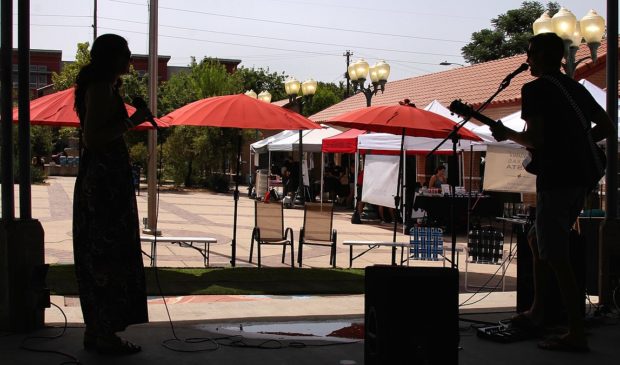City staff gets green light to research public plaza program
Tuesday, October 23, 2018 by
Ryan Thornton While it’s fashionable in the U.S. for private enterprises to attach the word “plaza” to many things that are not, like shopping malls or condominiums, a public plaza can be hard to find (Austin’s beautiful Plaza Saltillo actually prohibits “loitering,” the primary activity in a plaza). However, City Council members now hope to generate public life by creating a systematic framework to integrate public plazas throughout the city.
Council unanimously passed a resolution Thursday afternoon that tasks city staff with finding the national best practices for temporary and permanent public plaza programs and providing recommendations to the Council based on that research. From these recommendations, Council seeks to adopt a program for the creation of public plazas.
Plaza programs have gained popularity in the U.S. following the creation of New York City’s successful plaza program in 2007, now responsible for 74 partner-managed neighborhood plazas.
Attempts to create lively plazas in Austin have often been frustrated by the logistical back-and-forth between private business owners and city government over who will be responsible for providing and maintaining the space. The essence of the problem is that, as Jorge Rousselin of the Planning and Zoning Department explained to Council, a successful plaza doesn’t benefit one or two property owners, but rather the public as a whole.
The resolution therefore aims to establish a standard practice for creating public-private partnerships for the co-management of plazas.
“I think it’s in the absolute best interest of the city to encourage that our public plazas really be used in vibrant ways, in ways that serve the whole community, in public ways, and not really become sort of an extra space of a private business,” said Mayor Pro Tem Kathie Tovo.
Austin’s Adopt-A-Median Program already has an analogous process whereby a private group can apply to modify and steward a public space, but the resolution highlights the need for a process uniquely designed for plazas.
Tovo alluded to the Barton Springs Plaza (Nightwing Plaza) and Margaret Moser Plaza as examples of plazas which have been caught in a standstill due to the lack of a streamlined process.
“Even after all the work and the staff time and the interest and dedication from private partners, we still don’t have those public plazas,” said Tovo.
Mayor Steve Adler showed support for the resolution but highlighted the importance of finding a solution that is specific to the needs of Austin, as opposed to accepting a solution based on a methodology using national best practices.
“They could be the best practices for something that’s not a good idea,” said Adler.
Rousselin reassured Adler and Council that no solution would be recommended for adoption simply because it worked well in another city.
“We have already in our analysis started to realize that different cities obviously do things differently and we would need a program that is a best fit for Austin,” he said.
Council unanimously approved the resolution, with Council Member Leslie Pool absent.
City Manager Spencer Cronk is to present the research findings and recommendations to Council by April 15, 2019.
Photo by Larry D. Moore [CC BY-SA 4.0], from Wikimedia Commons.
The Austin Monitor’s work is made possible by donations from the community. Though our reporting covers donors from time to time, we are careful to keep business and editorial efforts separate while maintaining transparency. A complete list of donors is available here, and our code of ethics is explained here.
You're a community leader
And we’re honored you look to us for serious, in-depth news. You know a strong community needs local and dedicated watchdog reporting. We’re here for you and that won’t change. Now will you take the powerful next step and support our nonprofit news organization?


